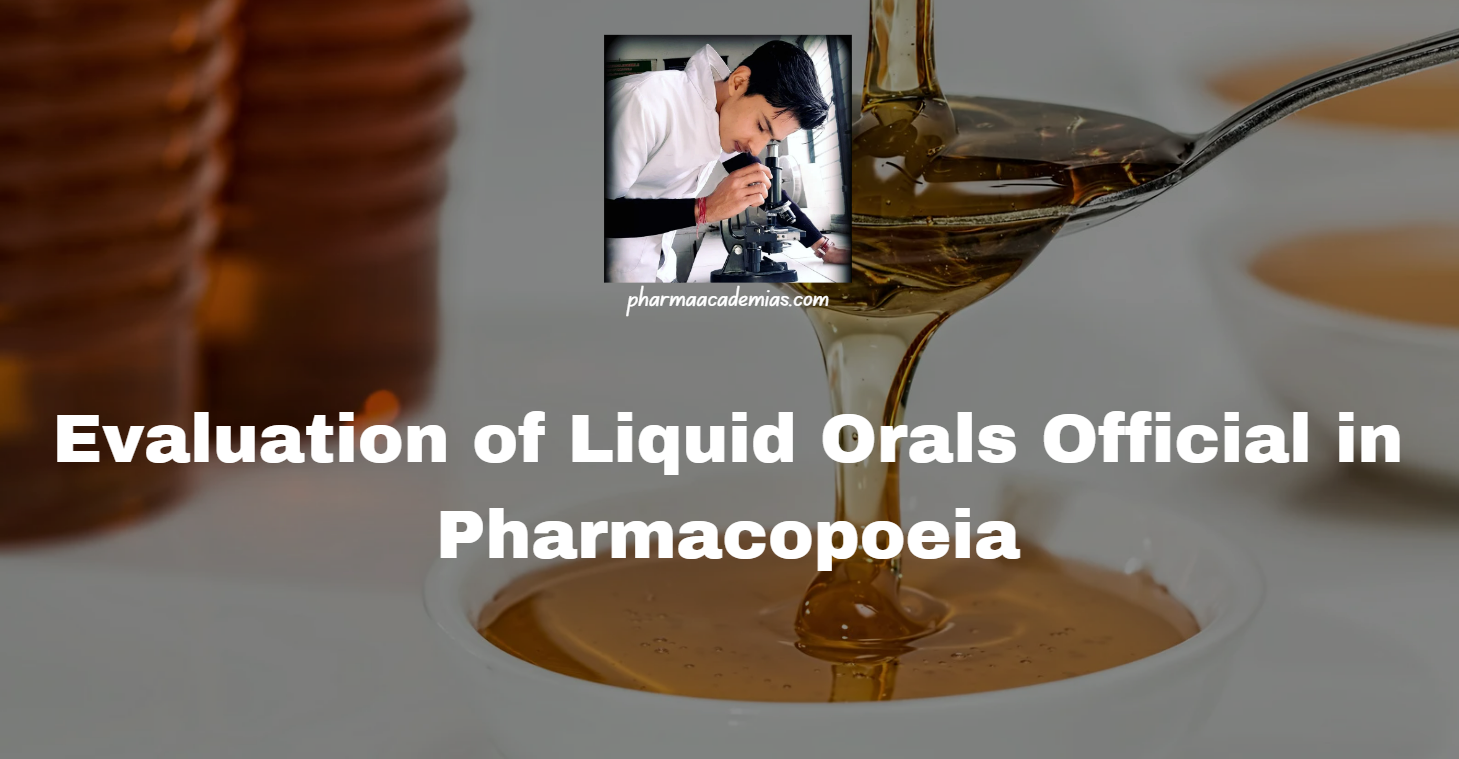The evaluation of liquid oral preparations, such as syrups, elixirs, suspensions, and emulsions, involves a series of tests and standards outlined in pharmacopoeias. These tests ensure that the products meet the required quality, safety, and efficacy standards. The following are key evaluation parameters commonly found in major pharmacopoeias such as the United States Pharmacopeia (USP), the British Pharmacopoeia (BP), and the European Pharmacopoeia (EP).
General Quality Control Tests for Liquid Orals
1. Description
Appearance: The product should be clear, free from particles, and have a uniform color and consistency as specified.
Odor and Taste: Should be palatable and acceptable to patients.
2. Identification
Tests: Specific tests to confirm the presence of the active pharmaceutical ingredient (API).
Methods: Spectroscopy, chromatography, and other relevant techniques.
3. pH
Importance: Ensures the product is within the specified pH range to maintain stability and efficacy.
Measurement: Using a calibrated pH meter.
4. Viscosity
Importance: Ensures proper flow properties and ease of administration.
Measurement: Using viscometers or rheometers.
5. Specific Gravity
Importance: Ensures consistency in formulation and concentration.
Measurement: Using a pycnometer or hydrometer.
6. Content Uniformity
Importance: Ensures each dose contains the appropriate amount of API.
Testing: Analyzing multiple samples to confirm uniform distribution of the API.
Specific Tests for Different Types of Liquid Orals
Syrups: Syrups are concentrated aqueous preparations of sugar or sugar substitutes, with or without added medicinal substances, flavoring agents, or preservatives.
Assay of API: Quantitative determination of the API content.
Microbial Limits: Ensuring the absence of harmful microorganisms.
Sweetener Content: Verification of the type and amount of sweetener used.
Elixirs: Elixirs are clear, sweetened hydroalcoholic solutions intended for oral use, containing active ingredients with or without flavoring agents.
Alcohol Content: Quantitative analysis to ensure it is within the specified range.
Assay of API: Determination of the API content.
Clarity: Ensuring the solution remains clear and free from precipitation.
Suspensions: Suspensions are biphasic liquid dosage forms in which finely divided insoluble solid particles are uniformly dispersed in a liquid medium with the aid of suspending agents.
Particle Size Distribution: Ensuring uniformity and preventing sedimentation.
Redispersibility: Ensuring the suspension can be easily redispersed by shaking.
Sedimentation Rate: Measuring the rate at which particles settle.
Emulsions: Emulsions are biphasic liquid dosage forms consisting of two immiscible liquids, one dispersed as fine droplets within the other, stabilized by an emulsifying agent.
Droplet Size Distribution: Ensuring uniformity of the dispersed phase.
Phase Separation: Ensuring the emulsion remains stable without phase separation.
Centrifugation Test: Assessing the stability by subjecting the emulsion to centrifugal force.
Microbiological Quality Control
1. Total Aerobic Microbial Count (TAMC)
Test: Determines the total number of aerobic bacteria present.
Limits: Must comply with specified limits in the pharmacopoeia.
2. Total Yeast and Mold Count (TYMC)
Test: Determines the total number of yeasts and molds present.
Limits: Must comply with specified limits.
3. Specific Pathogens
Tests: Screening for specific pathogens like E. coli, Salmonella, and Staphylococcus aureus.
Requirements: Absence in the specified sample size.
Stability Testing
1. Shelf Life
Tests: Stability studies under various conditions (temperature, humidity, light) to determine the shelf life.
Parameters: Assessing physical, chemical, microbiological, and therapeutic stability.
2. Accelerated Stability Testing
Purpose: To predict the shelf life by subjecting the product to elevated conditions.
Conditions: Typically 40°C and 75% RH for 6 months.
Packaging and Labeling Evaluation
1. Container Closure System
Test: Ensures the container provides adequate protection from environmental factors.
Requirements: Must prevent contamination, leakage, and degradation.
2. Labeling Compliance
Content: Must include product name, strength, dosage form, storage conditions, expiration date, batch number, and manufacturer’s details.
Legibility: Labels must be clear and easily readable.
Conclusion
The evaluation of liquid oral preparations as outlined in pharmacopoeias involves comprehensive testing to ensure the product meets the required standards for quality, safety, and efficacy. By adhering to these standards, manufacturers can ensure their products are safe and effective for patient use.

